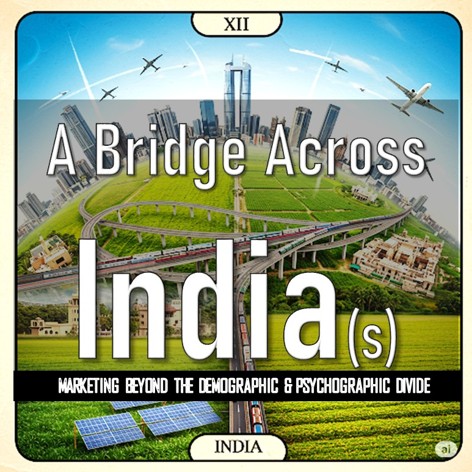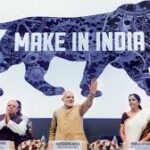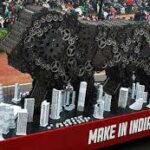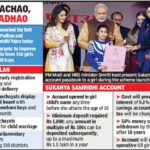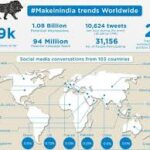A Bridge Across India(s)
Marketing beyond the Demographic and Psychographic Divide
Context:
I recently read three articles in one of the newspapers. One that spoke about the income disparity that exists in India and if I may add, one that is widening. Combined with another article they tried to make sense of the income classes in India. A third article a few days later, gave data pertaining to education and economic affluence. Leaving the socialist aspects aside, the averages as usual by themselves are misleading and deceptive.
Exhibit A:
According to a statistic (source or basis not explicitly mentioned by the report) an income of Rs2.9Lakhs per annum puts one into the Top 10% earners and to enter the Top 1% an income of Rs.20.7Lakhs per annum shall suffice. However, to get into the Top 0.1% you need an annual income of Rs.2.25Crores. The comparable numbers in terms of accumulated wealth or net assets for these brackets are Rs.21Lakhs and Rs.82Lakhs for the Top 10% and Top 1% respectively.
Exhibit B:
The associated article in the same newspaper quoted data from 2 reports namely the Indus Valley Report 2025 and the Knight Frank Wealth Report 2025. The Indus Valley Report proposes the concept of 3 Indias based on income categories
- India 1 – Representing the wealthiest 10% of the population who have a per capita income of USD15000 (Rs12.8Lakhs) comprising of approximately 30MN households
- India 2 – 23% of population with per capita income of USD3000 (Rs.2.5Lakhs); ~70MN households
- India 3 – 67% of population with per capita income of USD1000 (Rs.85Thousand); ~200MN households
Exhibit C:
The third article looked at the social caste construct and how it impacted education levels. Education it opined and I agree is perhaps the biggest factor in inter-generational upward mobility. The article also referred to data gathered by the NSSO.
Premise:
Looking at these numbers set the marketer in me thinking about what lies beyond these income/wealth numbers and how we as a tribe use the demographic data for creating/defining our target audiences. The thought then led to a further reading and assimilation of data from a wider range of articles and reports.
What also found its way into my thinking were my recent experiences with studying Consumer Archetypes and my interactions with a vast set of consumers trying to understand their aspirations and motivations.
While by no means exhaustive or even pretending to be scholarly my notes as I made them threw up a pattern that potentially can serve as a de facto framework for marketing to Indian consumers based on 3 broad dimensions:
- Geographic
- Economic and
- Psychographic
A combination of these dimensions help us understand the 4As namely Availability, Affordability, Accessibility and Acceptability of Products and Services that we marketers aim to influence and promote.
Marketing is essential for raising awareness, building trust, and encouraging the use of services and products.
From the point of view of the Geographic Divide i.e. Urban and Rural, inclusive marketing involves more than just targeting rural audiences—it requires a thoughtful understanding of their distinct challenges and cultural backgrounds to create meaningful connections and promote the adoption.
Nielsen reports provide important insights into overall consumer trends, spending patterns, and the key role affordability plays in shaping consumer behavior across different groups. With much of India’s economic activity and spending power concentrated in urban areas, a targeted approach is essential to effectively understand and engage rural markets through customized marketing strategies.
- Rural consumers are generally more price-sensitive and favor local brands that meet their needs and budget.
- Urban consumers are more brand-conscious and are influenced by national/international brands and media trends.
- Rural families are often larger, with centralized decision-making by one person.
- Urban families are usually smaller and nuclear, with shared decision-making between male and female members.
On the Economic dimension, the narrowing of the consumption – expenditure gap between urban and rural areas, coupled with the increasing inclination towards non-food items in rural spending, signifies an expanding market with evolving needs and preferences. Marketers who recognize this burgeoning potential and tailor their offerings to meet these specific demands are poised for success.
Fueled by rising income levels and various government support initiatives, the purchasing power of rural consumers is on an upward trajectory.
Growing access whether in terms of transport infrastructure paving access to higher order necessities such as health, education or to information and awareness courtesy the digital access that the penetration of mobile phones and internet have meant higher aspirations.
Believe it or not the axis, however low it might have been has considerably shifted up and right over the last 2 decades. Therefore, understanding the Psychographic aspect of the change is an imperative. Unfortunately, as old school as I may sound, data alone cannot get marketers across the line.
There is no substitute to first hand exposure to the consumer. A marketer worth her salt cannot, dare I say should not compromise on living a day in the life of the consumer(s) they aspire to market to. Multiple times over, if need be.
Bridging the demographic and the psychographic divide in India necessitates a strategic and sustained commitment to understanding and effectively serving the unique needs of different archetypal consumer profiles that emerge based on the dimensions and factors outlined.
Archetypes
Debatable as they may (and intentionally so) the broad archetypes that emerged according to my notes are as below:
The Rulers
The prime movers and shakers if not already who-is-who these are folks who are heading there or at the very least striving to. They are setting trends and shaping narratives – social, political and economic as they go along. The Rulers are the HAVES.
The Controllers
They are the country cousins of the archetype just above. They have POWER and do not hesitate to wield it. They are always in-step or at worst one behind with what is current and trending. Social superiority is essential. The Controllers are the MUST HAVES.
The Aspirers
Their trajectory is pointing upwards and their ambitions are keeping it there. They have SKILL and KNOWLEDGE to get where they want to. They are the difference between a fad and trend! They are the WANTS.
The Dreamers
They are doing well for themselves though things could always be better. The dreamers are happy with the fact that it is possible for them to be better. However, ambition takes back seat for sentimental reasons or contentment or pragmatism. They are the COULD BES’.
The Warriors
They are inching towards a better life for themselves. Every day is a battle they fight and WIN. Bruised and battered they may be but they wear their battle scars with pride. Making ends meet is not the goal it is something they have to do to get to it. The Warriors are a tribe that is armed with a can do spirit but they are the MUST DOS’.
The Survivors
They have limitations, severe ones. The absence of privilege of any sort is what defines them. Yes, they depend on others but that is just the cards they have been dealt. There is a desire to change their future and rid themselves of the baggage of the past (socio-economic). They are the NEEDS.
3×2 India Framework
This proposal based on a top-level analysis of consumer psychographics and consumption patterns unveils distinct differences between urban and rural populations across the economic divide. The image that follows tries to give context to the archetypes on 2 axes based on Geographic and Financial. This placement of consumer types in context underlines the need for tailored marketing strategies across the archetypes.
Key strategies for success include prioritizing localized product offerings and pricing, building robust distribution networks that penetrate remote areas, utilizing local languages and culturally relevant messaging, and fostering trust through transparency and community engagement.
Conclusion
The increasing reach of digital platforms presents significant opportunities, but addressing the challenges of connectivity and digital literacy requires a hybrid approach that integrates digital outreach with strong community-based initiatives.
There are some useful and celebrated case studies in the form of Project Shakti and e-Choupal that demonstrate that a deep understanding of the local context and a willingness to adapt strategies are fundamental to achieving meaningful impact in rural India. However, these need to be perhaps revisited through the lens of economic disparities too.
Ultimately, bridging the divide requires a long-term commitment from businesses in general and more specifically marketers along with other stakeholders to create a more inclusive and holistic marketing construct that speaks to all consumer types.
Ready?!
Going DIGITAL / Talking GREEN ?
Are you as a brand or business or communicator doing the same? Well here’s a thought. Going digital alone may not be as green as you think or have been led to believe it is.
Do not get me wrong, marketing work-flow automation, digitization, etc. are a step in the right direction. However, their “greenness” may be getting over-stated when it comes to a marketing context and conscience. Marketers across organisations tend to add the green tag to all or any such initiative that they take without a holistic understanding of the carbon cost of such an exercise.
This overtly simplified rationale of digital = no paper = green may be where most marketers stake claim to green. This conventional wisdom approach was good enough two or may be three decades ago when “paperless office” was a buzz word.
RIGHT NOW is the time for the marketing tribe to step its game up and make green tangible.
I have seen EV cab operators give CO2 or Trees equivalent in their apps to make consumers aware of the impact of their choice(s). Utility companies moved from paper bills to e-mails. Many of the solar rooftop installation players too are using this ploy. The question though is, how much of it does a consumer really comprehend?
Yes paper bill to email was a timely step but who is making you aware of the green cost of the email? There is a green cost every time we search, browse, scroll, play or transact digitally.
The heart of the digital world lies in data centers. These facilities, housing servers that store, process, and disseminate data, are massive consumers of electricity. Firstly, they power the servers themselves, and secondly, they require extensive cooling systems to prevent overheating. Estimates vary, but studies suggest data centers collectively consume approximate 340TWh or 1-2% of global electricity.
A single data center often can consume the equivalent electricity of 50,000 homes.
Here are some assorted data points intended as food for thought:
Email: A single, simple text email has a small footprint (estimated around 4g CO2e), emails with large attachments can increase this significantly (up to 50g CO2e or more). The sheer volume – estimated at over 347 billion emails sent daily in 2023 (Statista, 2023) – means the cumulative impact is substantial. Furthermore, “spam” emails, which constitute a large percentage of traffic, represent wasted energy for processing and storage.
Digital Transactions: Financial transactions, online banking, and cryptocurrency mining require processing power and network usage. While a digital transaction is often more energy-efficient than a physical bank visit, the scale is immense. Cryptocurrency mining, in particular, is notoriously energy-intensive, with Bitcoin’s network alone consuming energy comparable to entire countries.
Social Media & Streaming: These platforms are particularly data-heavy. Streaming video accounts for a vast portion of internet traffic – estimates often place it around 60-80% of total downstream volume (Sandvine Global Internet Phenomena Report). High-resolution video streaming, scrolling through image-laden social media feeds (like Instagram, TikTok, Facebook), and video conferencing all require constant data transfer and processing, demanding significant energy from data centers and network infrastructure.
According to Meta’s own report on sustainability the net emissions were CO2 equivalent 7.5 million tons in 2023.
Aside to compliance led, mandatory or responsible reporting by global majors, the brands of today going forward need to help their consumers make informed choices in the context of today. This means making green-speak colloquial. Making impact relatable, tangible and in classic marketing sense rewarding.
Whether consumption patterns actually change if people were indeed made aware of the green cost of watching a season, placing an order on the internet, time spent on social media is debatable but given the dire state of our planet surely worth an effort.
As marketers, we can surely be conscientious about the next reel we create for our brand or the next e-mail that get’s triggered or notification we serve for a cart action.
Ready?
Brand New Resolutions MMXXIV
I know, I know. Resolutions are passé. Nonetheless, I had to vent these thoughts that had been bubbling in my mind for the past few days and what better a way than to write a blog post. Since it was that time of the year I just decided to go ahead and put them in the form of an ancient ABVS tradition.
Without much further ado, let us jump right into my proposed Resolutions for Brands in 2024.
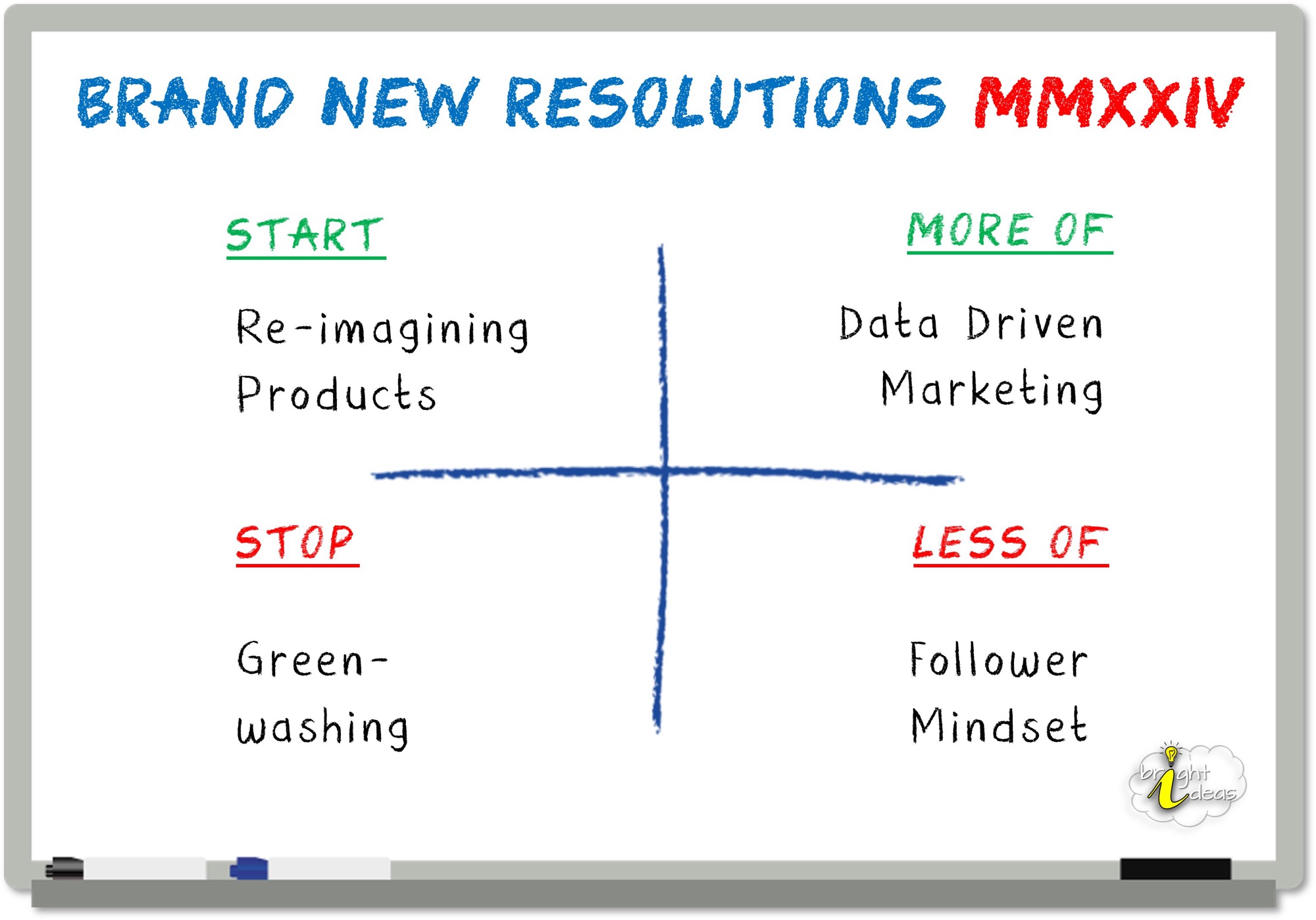
START | Re-imagining Products (&Solutions)
Enough and more has been written, discussed, and debated about how consumer and customer behaviour has seen a paradigm shift post-pandemic. That said, how many brands have re-thought or re-designed or re-organized their offering on account of this change? Not many one would reckon.
All of us acknowledge that it is a more connected world than it was pre-COVID19. Not because the technology was not available but because the adoption of technology had not happened. The pause in commerce in the 2 years of lockdowns has accelerated adoption journeys and tech roadmaps.

Therefore, in an IoT led world with AI making headlines and some real headway, dumb products without connectivity and with little or no user interaction are setting themselves up for failure if not extinction. Brands and more specifically Product Managers need to look hard at the JOB TO BE DONE and introduce some level of intelligence and interactivity in their offerings. The trap to avoid though is it being a lip-service or a gimmick.
STOP | Green-washing
Consumers today are more discerning. Only the brands GENUINELY integrating SUSTAINABLE in their narrative shall be able to or shall we say allowed to reap the rewards. Overtly simple methods of the last century such as using adjectives such as “Natural”, “Organic”, “Traditional” in communication will not work. It’s not just the offering but also the value proposition that needs to be sustained (sustainable).
Yes, there is a consumer who is willing to pay a premium for sustainably produced/sourced/managed products and solutions but that does not mean brands have a birthright to a higher price-point.

All brands sooner or later will need to spell out their vision and sustainability goals. Whether from a compliance perspective or from a consumer preference perspective or a market valuation perspective, brands shall be compelled to share their sustainability dashboards.
MORE OF | Data-driven Marketing
The downside of the social era has been that brands have started to confuse conversations with/ feedback from consumers with primary research, analysis, and culling insight. All marketers do understand that the Voice of Consumer is the starting point not the point itself. It is imperative that brands plan for and ensure that a strong understanding of the consumer/user continues to be the basis for creating products or solving problems.

Any understanding of the market that is built on data, reports and research is paramount and should take precedence over anecdotal evidence.
Research aside, consumer immersion is hygiene and brands should mandate this for their team. Every minute spent observing consumers in their setting is invaluable.
Many of my past colleagues at Nokia have (at that point in time very grudgingly) spent tens if not hundreds of hours in consumer visits. The repository of consumer understanding that the exercises built is something that I am sure all of us bank on till date – it is become the part that has honed our marketing intuition.
LESS OF | Follower Mindset
This is a pet-peeve. Also a sign of a lazy marketing organization. If something has worked for Brand A it is not necessary for Brand B to respond with a “Me Too”. Caution here is not to confuse this with being a fast-follower which isa well-accepted strategic approach.
A follower mindset is by definition reactive. Marketing teams that craft quick communication or value propositions based on market feedback beware. The battle for counter-share and shelf-share shall always force sales teams to demand an equivalent for a competitor’s new launch or variant. It is incumbent on the Marketers in the organisation to alter value for the consumers.
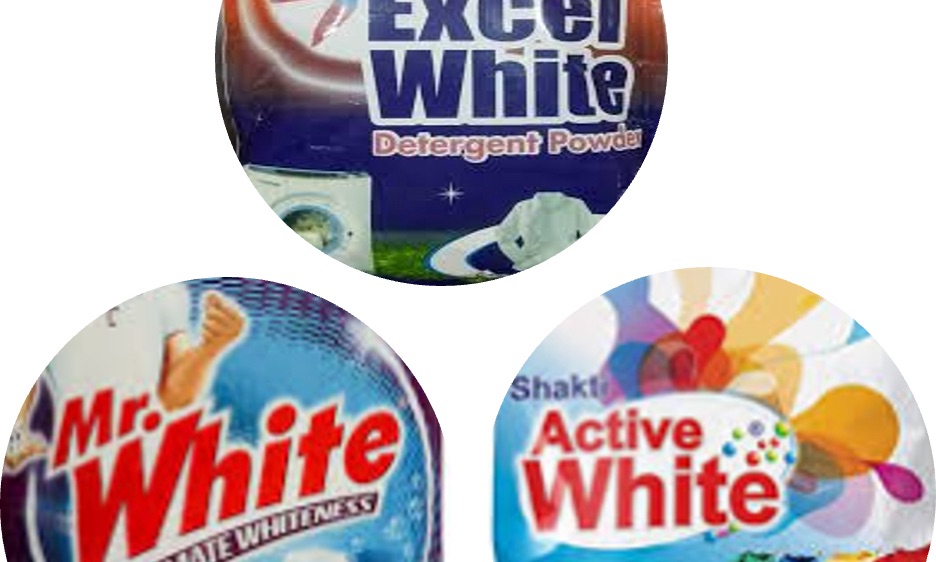
So be it a extra-lathering shaving cream or extra-whitening soap with dirt busters, the response cannot and should not be bigger, better, faster, more alone.
Points mentioned in the START and MORE OF if adopted should help brands come up with better ideas.
Here’s wishing all fellow marketers a great 2024!
Brand #RaGa Break-out
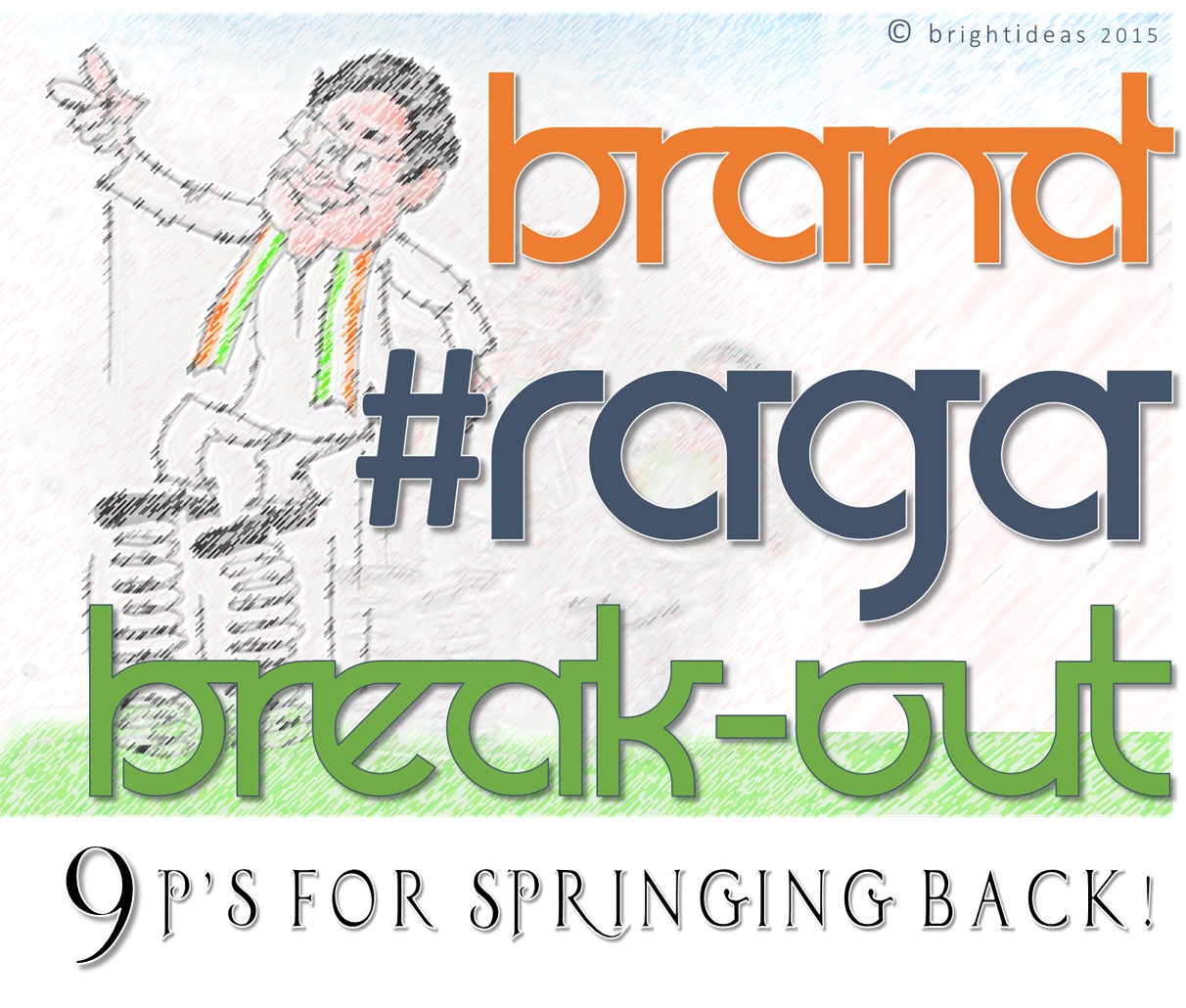 Nobody seems to be sparing a thought for a man once touted to be the future Prime Minister of India. The past year (slightly more) have possibly formed a part of a nightmare that Indian National Congress Vice-President – Rahul Gandhi (and many around him) would be hoping ends soon.
Nobody seems to be sparing a thought for a man once touted to be the future Prime Minister of India. The past year (slightly more) have possibly formed a part of a nightmare that Indian National Congress Vice-President – Rahul Gandhi (and many around him) would be hoping ends soon.
If one were to put it simply the ABC’s of this trauma are his recent ABSENCE from the political scene, what is widely seen as his strategic BLUNDER – his interview with Arnab Goswami in the lead up to the General elections last year and getting caught CATNAPPING on camera a debate in the parliament.
Ever since Mr. Rahul Gandhi has become butt of all ridicule with fresh jokes viralling on social media almost on a daily basis. Come to think of it, haven’t been passed on the good old Santa-Banta jokes for some time now!
On a serious note, who hasn’t made mistakes in life? At a time when most articles, reports and posts across media are taking the poor man to the cleaners – here’s a post that says “Give the man a break!”
A Brand View Story proposes the following 9P’s for Brand #RaGa- Presence
If their previous Prime Minister was hounded for being silent then #RaGa has been hounded for being absent! It’s not just his recent sabbatical that is in question. The opposition has often used terms like “tourist” to imply his part-time interest in politics.
Therefore PRESENCE is an imperative if Brand #RaGa has to make a comeback. By this we don’t just mean physical presence but we mean skin in the game! His personal commitment shouldn’t ever be a matter of discussion. - Purge
The Indian National Congress has often been found guilty of inaction against deadwood. It’s high time the congress eliminates in one fair swoop a host of people who are known liabilities and loose cannons. Yes, it will not go down well for a short while but the Congress will be better for it. If #RaGa wants to be seen as the boss he needs to act like one! - Promote
This one needs to be viewed in conjunction with the previous P. The organisation definitely does not lack talent. What it perhaps has been missing is an open acknowledgement! The extreme focus on one ‘family’ has been the signature of the congress. Even today the replacement for #RaGa is his sister Priyanka. This needs to change. #RaGa needs to build and openly announce a ‘guiding coalition’. Yes democracy is needed in the long run and the congress needs to put up a transparent system in place for talent to bubble up. - Professionals and Professionalism
Why should politics be the last refuge for scoundrels? Why can it not be a career choice for professionals? Why not corporatize? These are questions that have often been asked but seldom answered. Shouldn’t potential law makers and administrators themselves be aware of the laws or adept at management?
This is an opportunity for #RaGa. If he needs to appeal to the aspiring youth of the nation he needs to operate like a corporate and it cannot be just limited to hiring agencies anymore. #RaGa office needs to be work on the lines of that of Bollywood stars; teams of salaried professionals. Gone are the days of the zarda chewing, diary jotting secretary! It’s time to get the economists, the market researchers, the marketing and finance guys etc. to manage different aspects of your brand.
Sycophants and people with entitlement need to make way for people with qualifications and performance. - Positivity
This is a tough P given the circumstances and needs to flow from #RaGa himself. As they say in Sanskrit “Manasa, vaacha, karamana” i.e. in thought, word and deed. Brand #RaGa needs a copious dose of positivity. Quick wins need to identified and they coupled with some of the other P’s should get things moving. - Preparation
Malcom Gladwell talks about the 10,000 hour rule in his book Outliers. #RaGa himself and his team need to prepare like mad if they are to be seen as true contenders. Yes he has been around in the political arena for over 10 years. He should by now have mastered the ropes of politicking but the perception is still that of someone who is a novice. He comes across as someone who is under prepared, superficial. #RaGa needs to be ready with the stats and sources and needs to be comfortable with the subject of his speech. His speech on return from his holiday helped neither the cause of the farmers he purportedly stood for nor his own cause. - Plank & Promise
In his much ridiculed interview with Arnab #RaGa mentioned his priorities over and over and over again regardless of what the question was.
i. Changing a system that is “unfair” to people everyday
ii. Empowering women
iii. Democratization and decentralization of power
iv. Right to information
All noble causes to espouse yet he failed to impress the millions that watched glued to their screens.
Brand #RaGa doesn’t need a new plank or promise. What is required is a visible, tangible action and delivery on the above. The opportunity to start is available right at home. Puppet organisations like NSUI and Youth Congress do not count. The changes have to be in the Big Boys League! - Propagate – Paint the Picture
Rome wasn’t built in a day and neither can brand #RaGa be. The brand values of “Change”, “Empowerment” and “Transparency” need to be codified. People at large need to understand these terms from the perspective of Brand #RaGa. - Participation
This is a connected world. Brands are conceived behind closed doors by a small group of individuals and decision makers however they evolve and breathed life into by millions who interact with it. Brand #RaGa needs to involve the people (few as they maybe) who have faith in it. Give them a stake in the brand. A lot can be learnt from the success of participative politics in India. An old congress war cry of “Swaraj” is now appropriated by someone else. Brand #RaGa needs to allow itself to break free from its manicured, protected image.
Those are A Brand View Story’s two cents. We hope we see Brand #RaGa adopt some of these P’s and rise up to the challenge. Old wine new bottle or re-branding or re-launch call it what you may but this tale is far from over.
As they say, time only will tell!
- Presence
Brand Supernovas
 How many times have brands or companies simply be-dazzled you with their products, communication, pace of innovation, service delivery etc and then suddenly dropped off the planet?
How many times have brands or companies simply be-dazzled you with their products, communication, pace of innovation, service delivery etc and then suddenly dropped off the planet?Not often, but I bet most of us would come up with an example or two.
Got thinking on similar lines and tried racking my brains to come up with a list my own. Funny thing with lists though is that you want the number of items on it to reach a nice round figure. What I figured was; whatever number that you can get to without stretching the core thought is probably the right number to have on the list. I am sure you nodded your head to that one.
Before I started writing this post I looked up the term “Supernova” in the dictionary
su·per·no·va (so͞o′pər-nō′və)
A rare celestial phenomenon involving the explosion of a star and resulting in an extremely bright, short-lived object that emits vast amounts of energy. Depending on the type of supernova, the explosion may completely destroy the star, or the stellar core may survive to become a neutron star.
I have for the purpose of this post highlighted what I believe are the operative parts.
Before I go on to cite examples let me establish the basic premise which is, a successful brand is the coming together of a great product or service and communication that resonates with the consumer leading to a distinctive identity, a marked preference and a position of leadership. Now, that’s an elevator pitch definition of brand success that covers most if not all bases.
Now brands fade for a variety of reasons and hundreds go into oblivion every day. Mostly because they didn’t deliver on the promise that they made. Reasons could be they stopped being relevant or they got complacent or they were poorly managed etc. The very opposite at one time or the other must have got them to the top. It is however important to make a distinction between brand supernovas and brand fads.
Brand supernovas are the ones that seemed to have got it right. Well atleast for a while.
Now for the examples. Here are brands that shot up high and lit up the horizon while they were at it. Almost all these brands had a great product/service idea that went down extremely well with consumers, customers and investors. Not all of them spent big bucks on advertising and communication but they sure captured more than a fair share of imagination – to the extent that nobody imagined them going bust.
 Napster: A pioneer in more ways than one. Based on a brilliant insight and a sound technology Napster shot to fame towards the end of the last millennium. It is said that Napster at its peak had over 80Mn registered users, a number to die for even in today’s socially hyper-connected world. Legal troubles signaled the beginning of the end. While the brand attempted a comeback, the magic didn’t simply happen. What Napster did was permanently alter how record labels perceived and carried out their business.
Napster: A pioneer in more ways than one. Based on a brilliant insight and a sound technology Napster shot to fame towards the end of the last millennium. It is said that Napster at its peak had over 80Mn registered users, a number to die for even in today’s socially hyper-connected world. Legal troubles signaled the beginning of the end. While the brand attempted a comeback, the magic didn’t simply happen. What Napster did was permanently alter how record labels perceived and carried out their business. Iridium: You had seen this kind of stuff only in James Bond movies before and these folks made it happen for real. Well almost! This service and technology was not only introduced ahead of its time but also prematurely. The “Everywhere” promise the brand made could not be delivered effectively for the lack of satellite arrangements. An out of the world investment (pun intended) in putting all those satellites meant an extremely highly priced service to the end users but more than that the fact that it didn’t work as promised took the wind out of Iridiums sails. They had to close shop but not before they had captured the world’s attention and imagination.
Iridium: You had seen this kind of stuff only in James Bond movies before and these folks made it happen for real. Well almost! This service and technology was not only introduced ahead of its time but also prematurely. The “Everywhere” promise the brand made could not be delivered effectively for the lack of satellite arrangements. An out of the world investment (pun intended) in putting all those satellites meant an extremely highly priced service to the end users but more than that the fact that it didn’t work as promised took the wind out of Iridiums sails. They had to close shop but not before they had captured the world’s attention and imagination. Kingfisher Airlines: An example from closer home. Their acquisition of Air Deccan established them as one of the leaders of the airlines industry in India. Their promise of a “good time” had people queuing up. The Branson’esque flamboyance of the owner helped the airline get more than its fair share of attention. They took a leaf out of PanAm by leading an explicit but unstated promise of stewardesses who were good enough to walk the ramp as models. The airline eventually was grounded as it ran up debts way beyond its ability to pay. The Kingfisher wasn’t flying anymore! It can be argued that the entire fiasco did not have a positive impact on the original brand of beer by the same name and on the holding company.
Kingfisher Airlines: An example from closer home. Their acquisition of Air Deccan established them as one of the leaders of the airlines industry in India. Their promise of a “good time” had people queuing up. The Branson’esque flamboyance of the owner helped the airline get more than its fair share of attention. They took a leaf out of PanAm by leading an explicit but unstated promise of stewardesses who were good enough to walk the ramp as models. The airline eventually was grounded as it ran up debts way beyond its ability to pay. The Kingfisher wasn’t flying anymore! It can be argued that the entire fiasco did not have a positive impact on the original brand of beer by the same name and on the holding company.Coming back, the three brands did have a great product/service that gave them a distinct identity and a position of leadership. However, mismanagement in some form or the other led to the brands fading away but not before they had lit up the sky!
Branded Nation: Are We Unwittingly Walking Into A Brand-trap?
In the aftermath of the 2014 elections, the Congress kept mentioning that it got blown away by BJP’s marketing blitzkrieg. It should not have come as a surprise to the Congress party though, since the direction of BJP’s strategic thinking was more or less set during A.B. Vajpayee’s tenure as the PM.
The failure of the India shining campaign made the Congress complacent and the BJP resilient. During the ten years they were away from power the BJP practiced and perfected the craft. Finally mounting the attack with its most potent weapon! The sustained digital presence that started with veteran leader L.K. Advani, the share of mind/conversation and something all marketers swear by – on-ground connect; all proved to be gold.
No doubt it has worked for BJP the political party and catapulted it into government. The think-tank reckons it might just work for the government as well.
A government publicizing its schemes and initiatives is nothing new. The Modi government in under an year has kicked off and launched several such schemes and initiatives with much fanfare.
A marked change from earlier has been the ‘Go to Market’. Each one of the initiatives has been supported with a well thought communication plan and activations. Whether it is the Swatch Bharat Abhiyan, the Make in India or the Pradhan Mantri Jan Dhan Yojna every element that could have been branded has been. There has also been a flurry of war cries, rallying cries and punch lines such “Minimum Government and Maximum Governance”, “No Red Tape, Only Red Carpet” etc.
The government needs to tread carefully in order not to fall into its own ‘Brand-trap’.
India as a nation has traditionally been a reluctant marketer and this new aggressive approach has been and should be accorded a cautious welcome both from within and from outside the country. After all, if one of the world’s largest markets has to get its rightful share of the investment pie the helmsmen need to do whatever it takes to catch the world’s eye. Having said that, as with any other product or service the product experience has to back the claim.
All marketing has an element of hyperbole in it. It is for the marketers to ensure that the product lives up to the promises that are made. Regardless of who and where ‘dissonance’ is a concept that all marketers need to be wary of. Few would disagree that in the current context brands, though created by marketers are ‘co-managed’ by the consumers. Therefore, while it is good to see the slick marketing plans for initiatives, it is also important to ensure that the surrounding ‘buzz’ and the ‘conversations’ about need to be managed better and need to have a positive ‘slant’.
As someone once said “A hen lays an egg and cackles, the catfish lays a million without making a sound. We all know whose eggs we eat!”
The Brand Legacy
We live in some very interesting times. A competition or contest of any kind makes for an interesting read or watch. Politics perhaps has been the longest running entertainment show known to civilization. Politics is also an important teacher of strategy as much as it is a practitioner.
Ever since the new BJP (Bharatiya Janata Party) led government has been sworn in, its predecessor in government, leader of the alliance and hitherto India’s principal political party, the INC (Indian National Congress-I), has been fighting a battle of existence. Its diminishing relevance to the political context has its leaders vexed and despite the bravado, extremely worried.
No, this is not a post on politics. It’s a brand view on the latest tiff between the two that has been hitting the headlines. One may argue that it is media created but the fact is spokesperson from both sides are eagerly firing salvos.
The allegation is that the BJP government at the centre is systematically hijacking and ‘appropriating’ the icons of the INC. Mind you, the reference is to tall leaders of the nation such as Gandhi, Patel and Nehru; the makers of modern India.
How so? Well first up (and well before they came to power), the BJP took up the cause of reviving the forgotten legacy and contribution of Sardar Patel. Next, one of BJP government’s biggest initiatives – a cleanliness and sanitation drive “Swachh Bharat Abhiyaan” was dedicated to the memory of Gandhi.
Now, for long years these brands have been considered property of the INC simply because they were members of the same and for over 50 years of independent India the INC was also the ruling party. They were the inheritors of the ‘legacy’!
Roads, railway stations, bridges, schools, universities, hospitals, you name it, have been christened or re-christened to keep the memory of the leaders alive. Scores of government schemes too have been named after them.
So what is new, one may ask. Well, it is the bold in your face use and invocation of the names of these leaders by the BJP that seems to have ruffled some feathers.
In what may in hindsight have been a strategic masterstroke, the BJP think tank instead of creating and building new “brands” read use the names of their founding leaders chose to stick with the mega brands that were already present. Not that there have been no great leaders in the BJP or the Janta Party from which the BJP was formed. Jaiprakash Narayan or Dr. Shyama Prasad Mookerjee or Deen Dayal Upadhyay or even former prime minister Atal Behari Vajpayee they were all stalwarts.
What then are the benefits of sticking with the likes of Gandhi, Patel and Nehru?
- The positive perception that BJP government is embracing the leaders of yesteryear. Thinking of them in their capacities as icons of the nation and not a specific party.
- Not creating new brands also shows the BJP as not practicing the sycophancy that INC has often been accused of.
- Brand Gandhi, Patel & Nehru do not need to be explained. Their values and what they stood for atleast at a surface level is already known; for generations. They are names you come across everywhere from textbooks to airports.
- This is a young country eager to move forward, something we referred to in a previous post as well. 60% of this country was born after the emergency era and over 40% post liberalization. The romance of living through the emergency, the ideological wars have no relevance since they were never eulogized outside of the so called intelligentsia. Establishing JP or SP Mookerjee or Upadhyay and their values would take years bringing out from the intelligentsia to the masses.
- Even in the use of the brands the BJP has hit the nail on the head as far as using them for what they stood for
- Gandhi for equality and human dignity. Connected with Sanitation as a human right and linked with his famous quote “Cleanliness is next to Godliness”.
- Patel for unity. Often accused of being divisive in ideology, the BJP’s use of Brand Patel has been masterly.
- Nehru for progressiveness and scientific temper. The last nail in the coffin so to speak. With the 4th generation of Nehruvian descent vying for the top job, the INCs last minute scramble for Nehru’s 125th birth anniversary celebrations has been subject of ridicule.
Lessons in marketing again, a seemingly successful strategy of taking latent brands, connecting them to contemporary requirements in a relevant manner. For the bean counters fantastic Return on Marketing Investment!
Who Stole My Diwali?
Diwali has always been my favourite festivals especially, as a kid growing up in Delhi. It was a festival that came just at the perfect time in the calendar no matter which way you looked at it. It was the much needed respite from school, weather-wise it signaled the onset of winter, it meant a lot of dry fruits being passed around (a novelty if you belonged to a middle class family), new clothes for everyone, the whitewash, the putting up of lights, the rationed fire-crackers, mother spending hours in the kitchen making some traditional sweetmeats and of course all the mithai that came in from outside! Everything about the festival was bright and bordered opulent; middle class family remember?!
This year unlike any other year in my life none of the gift boxes that we received contained any dry-fruits or even mithai! I know as a recipient its bad manners to complain about the gifts that one has received. It obviously is the “givers” prerogative. But seriously not one box containing dry fruits or mithai??!!!
Marketers, yes my own tribe, have over the years stolen Diwali. They have used the all the vile and guile in the 4Ps to rob me of my Diwali. The beautifully packaged gift boxes containing products from the slow moving inventory pile. Delightfully priced combo offers on the run of the mill placed conveniently in the ever accessible department store or online. Finally promoted with messages on various media with emotional and economic innuendos.
The days when one went to the Lajpat Nagars and Karol Baghs of the world to buy dry fruits in bulk had been replaced a decade ago by the enterprising business who made the assortment packs in fancy baskets and partitioned cardboard boxes wrapped in transparent colour paper. One let that pass because as one giving the gift it took away the pain of making packages at home and as a recipient the assortment brought in even the more expensive hitherto untried varieties of dry fruit into the household.
Some wise guy or guys came up with the idea of why Diwali joy should be restricted to sweets alone and over time combo packs or gift packs full of “namkeen” corrupted the Diwali gift boxes. Not to be left behind the fruit juice folks jumped on to the bandwagon. Suddenly, dry-fruits and mithai were vying for space and attention.

. Visiting one of those big pandals put up for Diwali by your neighbourhood “ABC Sweets” and buying the different kinds of mithai was such a ritual. The chena murgi, the kaju katli, the smaller dry gulab jamuns and rasgullas and scores whose name doesn’t matter but you would try out. All gone! This year I didn’t need to lose my patience with the bhaiyya because my boxes weren’t getting wrapped or there was no one to attend to me. A situation that was unimaginable as recently as two years ago.
I guess change hits you when it finally hits and it did this year. We received an overwhelming number of boxes of chocolate. If you too have been at the receiving end of this chocolate box attack you would have by now realized that there ain’t too much variety. I am bored, my kids are bored and a week after Diwali by refrigerator is still full of boxes of chocolate!
So those of you who are reading this and are amongst people who did send a gift box. You robbed me! You ain’t getting any dry-fruit or mithai from me no more!!
3 1/2 Signs of Lazy Marketing
 No less than a dozen brands are vying for the consumer’s attention every waking minute of the day. Some pleading, some enticing and yet others imploring him to give them space and preference.
No less than a dozen brands are vying for the consumer’s attention every waking minute of the day. Some pleading, some enticing and yet others imploring him to give them space and preference.In such a situation, brands and even more importantly those managing these brands need to work extremely hard for their communication to register. Despite being aware of the acute attention deficit some marketers go ahead and release sub-par communication, products and sub-optimal support.
Now one may argue that effective marketing need not necessarily be intelligent but it sure needs to be hard working. It cannot be denied that marketing must eventually end up moving the needle as far as a brand’s awareness, recall, preference, premium, profits, share etc. are concerned.
Often though marketing managers fall into the trap of creating a go to market plan simply because there must exist one. Succumbing to the pressures of fighting the competition, maintaining the share of voice, launching with full aplomb, keeping the channel partners satisfied do tick box but this approach is what breeds “Lazy Marketing”.
So here are 3 ½ signs of Lazy Marketing to watch out for. They might not exactly be as fundamental as the 4P’s but they are a good set of lead indicators if you are in the planning phase.
 Bigger, better, faster, more
Bigger, better, faster, moreIf a product is just about being bigger, better, faster, more as compared what competition has to offer then you know that there is little differentiation involved. So if you hear better mileage, smoother ride or larger, brighter display you know!
 Pricing Paralysis
Pricing ParalysisMost marketers seem to have forgotten about using pricing as lever. If ever they do it’s a defensive move which more often than not says “Hey I am not really sure if my product is better than the other guy, but I am lower priced”. When they do price higher they go on a justification trip. Pricing should signal value and if it doesn’t someone is being lazy.
 Feeding the Fad
Feeding the FadLet’s face it there are only so many ways of doing things and innovation is a stranger who comes into town very rarely. But the worst thing all of us as marketers can do is feeding the fad. Can’t come up with a good activation “Let’s do a flash mob”. Want to get some consumer interaction going “Let’s get people to post selfies!” Ideas do not need to be novel nor do they need to be in vogue, they need to relevant.
And now for the ½ sign
 Leave it to the celeb
Leave it to the celebMarketers must work hard if they want to get this piece right. Yes the decisions get made based on the wisdom at their disposal but never ever should a product or brand allow itself to be carried by a celeb. History is replete with examples that shout out “If the product isn’t great or the story is weak the celeb cannot do it for you.”
The Art of Electioneering
“Where absolute superiority is not attainable, you must produce a relative one at the decisive point by making skillful use of what you have.”
Karl von Clausewitz, On War 1832
As I write this post I am aware that hundreds like me are analyzing what the world’s largest democracy has witnessed and trying to put in perspective. As the election juggernaut rolled through the country under intense media attention the various angles to the 2014 elections in India have been explored, analysed and have been discussed threadbare.
One of the things that has bubbled up to the top and been referred to often with an accusatory tone is how India’s PM designate was a well marketed product. There is little doubt that what has just concluded is a milestone election in India’s history. One that introduced several elements into the Art of Electioneering. For sure there will be cases made out this election that students of business, social and political science will delve into across universities. I have in a previous post talked about how the Aam Aadmi Party (AAP) captured the imagination of millions in Delhi. What the creators of the Modi campaign have achieved is far bigger and far reaching in its impact.
“The general who wins the battle makes many calculations in his temple before the battle is fought. The general who loses makes but few calculations beforehand.”
SunTzu, The Art of War
In hindsight what has been executed and arguably to perfection have been text book strategies. Be it SunTzu, Porter or Aaker or Prahalad what the strategy cell of Bhartiya Janata Party has done is research, organize, propagate and execute or as I call it the ROPE trick. For the purpose of this discussion I shall attempt a retro-fit of my observations of the campaign to popular models in marketing strategy.
 Along the lines of the adage “Customer First” we’ll take a look at how the BJP campaign tested on understand the drivers for this election and the needs of the voters i.e. Customer Motivation.
Along the lines of the adage “Customer First” we’ll take a look at how the BJP campaign tested on understand the drivers for this election and the needs of the voters i.e. Customer Motivation.The marketing brains behind the BJP campaign ticked these boxes well and proper. They clearly identified the mood of an electorate that was young and aspirational. From an Indian perspective, we have as marketers devoted hours cracking the code and allocated millions of rupees trying to win the youth over. The BJP campaign identified the Youth as mainstream. As per the 2011 census 65% of India’s population is below 35 with a median age of 29 putting an eligible workforce (15-64) at a whopping 430 million, higher than the entire population of the USA!
The strategists at the BJP HQ caught on to this early in the day and having identified their target segment distilled their motivations. So what were the motivators they identified? Speaking of the high level motivators (since each has contributing factors and dimensions), a strong yearning for growth and opportunities, a need re-assert pride, a secure environment and a decisive leadership were what were chosen as the pegs of the campaign.
http://www.youtube.com/watch?v=4OZMHVtnFRE
The campaign planners were also smart enough to place their communication not just on traditional media but where the Youth were on the internet constantly communicating with each other using a variety of social networking tools from BBM to Instagram to Pintrest to Google Hangouts! This enabled BJP to speak to them at an individual level as well as a collective, influential mass. More importantly, this was not just at the time of the campaign. The social leg of the BJP campaign started a couple of years ago with senior leaders writing blogs, active on twitter etc. The buzz around BJP was atleast 3X their nearest competitor in the sociosphere the AAP.
Several articles have been and will get written regarding the extensive use of digital media by the BJP in election 2014. The use of technological wizardry with the 3D rallies or the beat and booth level mass outreach mobile screens carrying their leaders message the campaign exploited every possible touch-point.
So was it just a media and technology blitzkrieg based on consumer (read voter) understanding or was it more?
Here’s where I would introduce another text book model to which in perspectives will answer what the BJP went about doing. This is about understanding your competition better than anyone else. The BJP used this understanding at every step of the way and in all their communication verbal, written or visual to attack them. Again in hindsight, the way the numbers panned out they seemed to have done it well.
The strategy cell of the BJP along with their campaign creators seemed to have blended their understanding of the voter and the ruling Congress to create the perfect potion that cast a spell over the electorate. The silence of the Prime Minister, the reactive nature of the Congress campaign, the disconnect of their leadership all became weapons in the BJP campaign arsenal.
The respective campaign taglines represented the middle of the road, motherhood tenor of the congress versus the more exhortative call for action from the BJP. Much again has been written and talked about this having been a “Presidential style” election. The author disagrees. Granted that this was an election of personalities like never before, but to say that this was the first is incorrect atleast as far as the past four or five elections are concerned. The BJP always has portrayed a leader whether it was the former Prime Minister Atal Behari Vajpayee with the slogan “Ab ki baari Atal Behari” during the 1998-99 elections or L.K. Advani with “Majboot Neta Nirnayak Sarkar”. Even in the past whether declared or not the contenders for the top post were always clear.
Endnote: The victory of the Bhartiya Janta Party in these elections was a result of a very well thought out strategy and smartly integrated ground realities. It was a journey that began well in time. Yes the leader himself had a role to play, but the magic was him resonating with the youth of this country. Voicing their aspirations and promising a better future. Clichéd and overused as it maybe it goes without saying that with great power comes great responsibility. The burden of the mandate will now be on the BJP it is for them to perform to their promise. The nation hopes for deliverance.

